#BIM and 3D Modeling
Explore tagged Tumblr posts
Text
Top 7 Questions to Ask Your Structural BIM Consultant

Partnering with a structural BIM consultant is a comprehensive solution that allows professionals to have hands-on precision structural BIM models. It enhances the project and accuracy. Asking these questions can help identify potential structural BIM consultants. Read more in detail and partner with the right consulting partner.
#structural bim services#structural 3d modeling#structural modeling services#structural bim#3d bim modeling#bim services#bim outsourcing services#bim consulting services#bim companies in india
3 notes
·
View notes
Text

Building Information modeling (BIM) is an clever software program modeling procedure that engineers, contractors, and designers can use to collaborate on a building’s layout, construction, and operation. It’s extra than just a version. It’s a method of gathering and handling facts at some stage in a building’s whole existence cycle.
BIM encompasses not simplest geometry and spatial relationships, however it also files constructing features, together with unique statistics about the sort of materials used, the quantity used, and the way the ones characteristics effect the building as a whole. BIM may be thought of as a database of facts ranging from task substances and cost – to the 3D version after construction – to operation of the facility. This records may be used to actively control a task each step of the way.
2 notes
·
View notes
Text

BIM Careers: Building Your Future in the Digital AEC Arena
The construction industry is undergoing a digital revolution, and BIM (Building Information Modeling) is at the forefront. It's no longer just a fancy 3D modeling tool; BIM is a collaborative platform that integrates data-rich models with workflows across the entire building lifecycle. This translates to exciting career opportunities for those who can harness the power of BIM.
Are you ready to step into the octagon of the digital construction arena? (Yes, we're keeping the fighting metaphor alive!) Here's a breakdown of the in-demand skills, salary ranges, and future prospects for BIM professionals:
The In-Demand Skillset: Your BIM Arsenal
Think of your BIM skills as your tools in the digital construction toolbox. Here are the top weapons you'll need:
BIM Software Proficiency: Mastering software like Revit, ArchiCAD, or Navisworks is crucial. Understanding their functionalities allows you to create, manipulate, and analyze BIM models.
Building Science Fundamentals: A solid grasp of architectural, structural, and MEP (mechanical, electrical, and plumbing) principles is essential for creating BIM models that reflect real-world construction realities.
Collaboration & Communication: BIM thrives on teamwork. The ability to collaborate effectively with architects, engineers, and other stakeholders is paramount.
Data Management & Analysis: BIM models are data-rich. Being adept at data extraction, analysis, and interpretation unlocks the true potential of BIM for informed decision-making.
Problem-Solving & Critical Thinking: BIM projects are complex. The ability to identify and solve problems creatively, while thinking critically about the design and construction process, is invaluable.
Salary Showdown: The BIM Payday Punch
Now, let's talk about the real knock-out factor – salaries! According to Indeed, BIM professionals in the US can expect an average annual salary of around $85,000. This number can vary depending on experience, location, and specific BIM expertise. Entry-level BIM roles might start around $60,000, while BIM Managers and BIM Specialists with extensive experience can command salaries exceeding $100,000.
Future Forecast: A Bright BIM Horizon
The future of BIM is bright. The global BIM market is projected to reach a staggering $8.8 billion by 2025 (Grand View Research). This translates to a continuous rise in demand for skilled BIM professionals. Here are some exciting trends shaping the future of BIM careers:
BIM for Specialty Trades: BIM is no longer just for architects and engineers. We'll see increased adoption by specialty trades like HVAC technicians and fire protection specialists.
Integration with AI and Machine Learning: Imagine BIM models that can predict potential issues or suggest optimal design solutions. AI and machine learning will revolutionize BIM capabilities.
VR and AR for Enhanced Collaboration: Virtual Reality (VR) and Augmented Reality (AR) will allow for immersive BIM model walkthroughs, facilitating better collaboration and design communication.
Ready to Join the BIM Revolution?
The BIM landscape offers a dynamic and rewarding career path for those with the right skills. If you're passionate about technology, construction, and shaping the future of the built environment, then BIM might be your perfect career match. So, hone your skills, embrace the digital revolution, and step into the exciting world of BIM with Capstone Engineering!
#tumblr blogs#bim#careers#buildings#bim consulting services#bim consultants#construction#aec#architecture#3d modeling#bim coordination#consulting#3d model#bimclashdetectionservices#engineering#MEP engineers#building information modeling#oil and gas#manufacturing#virtual reality#collaboration#bim services#uaejobs
2 notes
·
View notes
Text
Best BIM services provider - ASC Technology Solutions
ASC Technology Solutions, a premier BIM services provider, excels in offering BIM outsourcing services and 3D modeling services to a global clientele. With a robust team of industry experts, ASC provides innovative and quality BIM services, supporting general contractors, architects, and real estate developers. We ensure precision from LOD 100 to LOD 500, integrating services like BIM modeling, clash detection, and project visualization. Operating from six locations worldwide, ASC has successfully completed complex projects across 20 countries, establishing ourself as a trusted partner in delivering economical and quality-assured Building Information Modeling solutions.
2 notes
·
View notes
Text
Architectural BIM Services: Architectural Drafting & CAD Conversion
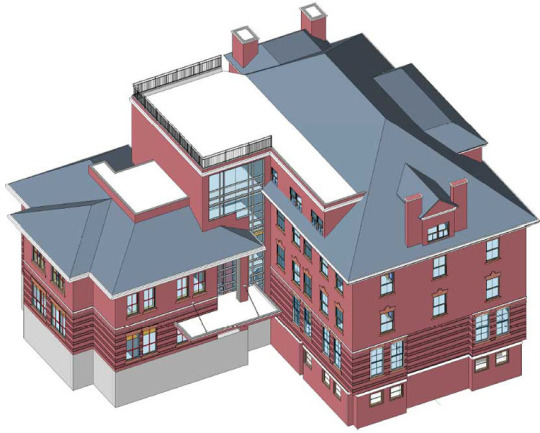
Architectural BIM services encompass a range of offerings aimed at enhancing architectural design processes. At Hitech BIM Services, we provide various architectural design services, from converting 2D AutoCAD floor plans into detailed 3D Revit BIM models, transforming CAD drawings into BIM execution plans, and developing full-scale rendered LOD (Level of Development) models following AIA standards, and integrating architectural, structural, and MEP designs to create clash-free models, etc.
Our architectural BIM services provide improved design communication, enhanced coordination with engineers and contractors, and develop comprehensive architectural building designs from existing 2D drafts and CAD models.
As experienced providers of outsourcing BIM architectural services, our team of professional designers excels in BIM platforms and delivers 3D models that meet specific design standards. Partnering with us ensures sustainable building designs, efficient architectural solutions, and precise technical documentation throughout the project lifecycle.
#architecture#building#bim#architectural design#architectural bim services#architectural 3d modeling#outsourcing
3 notes
·
View notes
Text
BIM Coordination Services California
Experience expert BIM coordination services in California. Our BIM modeling company offers MEPF BIM services and architectural expertise.
#BIM Services#BIM Service in California#Architectural BIM Service in California#3D BIM Modeling#Scan to BIM#Clash Detection#MEPF BIM services
2 notes
·
View notes
Text

Erasmus is one of the topmost Outsourcing architectural 3d visualization and rendering company based out of India, offering graphics rich 3D Rendering Services at affordable prices.
#bim services#civilengineering#bim technology#autocad#2d drafting services#constructioncompany#3d render#rendering#3d bim modeling services#3d cad modeling#data entry#architecture#civil construction#renovation#building#wednesday motivation
3 notes
·
View notes
Text
Best Architectural 3D Revit Modeling Services at Affordable Price
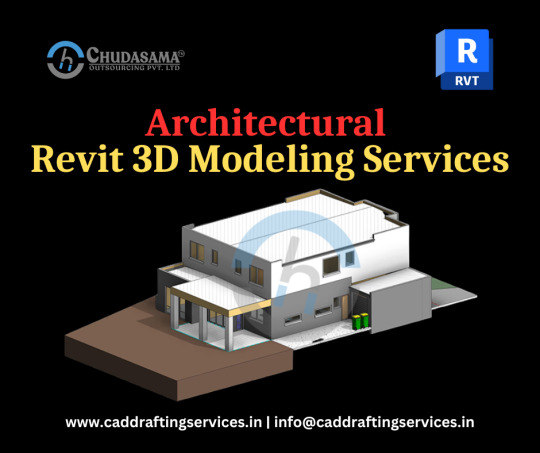
Chudasama Outsourcing is a leading Architectural BIM company that provides high standards of services and quality. We provide high-quality 3D Revit Modeling Services at an affordable price. We take great pride in being able to produce excellent quality Revit modeling services to our clients overseas. Our clients are located in the USA, UK, Canada, New Zealand, Australia, and UAE, etc. We provide services like Architectural, Structural, MEPF, Shop Drawings, and as-built Drawings in Revit. If you want to outsource any such services, then contact us at [email protected]
#revit modeling services#3d revit modeling services#architectural revit modeling#architectural revit modeling services#3d architectural revit modeling#outsource revit modeling services#bim modeling services#architectural#revit#building information modeling
3 notes
·
View notes
Text
Revit Architecture Training Course for Beginners to Advanced
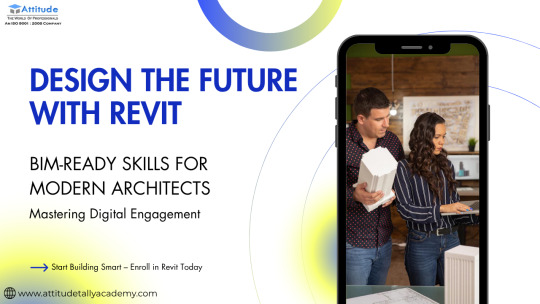
Learn Revit Architecture from beginner to advanced level and master the skills needed for 3D modeling, floor plans, structural elements, and construction documentation. This course is ideal for students, architects, civil engineers, and interior designers looking to enhance their professional expertise with BIM tools.
🏫 Training Available at Two Locations:
📍 Yamuna Vihar: View on Map 📞 Call: +91 9654382235
📍 Uttam Nagar: View on Map 📞 Call: +91 9205122267
🌐 Visit Website: www.attitudetallyacademy.com 📩 Email: [email protected]
👉 Get hands-on practice with expert trainers and real-world projects. Build your future in architectural design with one of the industry’s most in-demand tools.
#Revit Architecture Training#Revit Course for Beginners#Revit 3D Modeling#Revit BIM Training#Revit for Architects#Revit for Civil Engineers
0 notes
Text
A Deep Dive into Architectural 3D Modeling
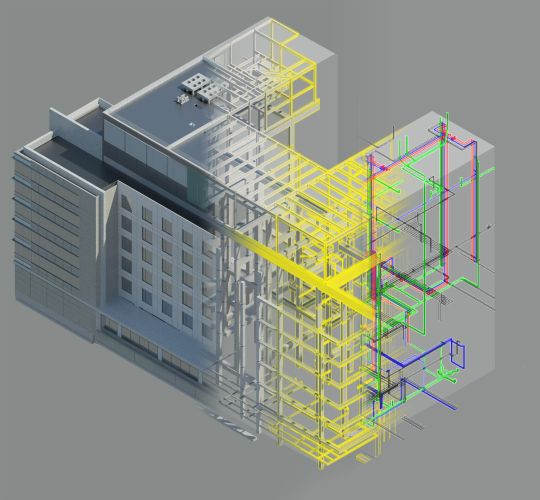
In the ever-evolving world of construction and design, architectural 3D modeling has become an essential tool. It empowers architects, engineers, and stakeholders to visualize and refine a structure long before the first brick is laid. With the help of architectural 3D modeling services, projects can move from concept to construction with improved precision, efficiency, and confidence.
What Is Architectural 3D Modeling?
Architectural 3D modeling is the process of creating a detailed digital representation of a building or structure in three dimensions. Unlike traditional 2D drawings, which only provide flat views, 3D models bring architectural visions to life with depth, scale, and spatial awareness. These models allow professionals to view designs from every angle, improving decision-making and communication across the board.
At its core, architectural 3D modeling enhances project clarity, facilitates stakeholder engagement, and supports design validation before construction begins.
To learn more about the fundamentals, check out our guide on What is Architectural 3D Modeling?
Benefits of Architectural 3D Modeling Services
Professionally developed architectural modeling services offer several tangible benefits:
1. Realistic Visualization
With lifelike renderings, clients and project teams can truly understand how a space will look and function. This is especially useful for interior layouts, façade treatments, and lighting analysis.
2. Accurate Measurements and Scaling
Measurements in 3D models are accurate and easily adjustable. This ensures all stakeholders are working with precise data, reducing the margin for error during construction.
3. Improved Project Collaboration
With centralized 3D models, collaboration becomes seamless. Everyone involved—from architects and engineers to MEP consultants and contractors—can reference the same model and update it in real time.
4. Design Conflict Detection
Detect clashes early on—whether between structural beams and HVAC ducts or electrical systems and wall features. The integration with architectural BIM modeling ensures coordination across disciplines.
5. Faster Design Approvals
Detailed 3D architecture design can speed up client approvals and regulatory clearances. When authorities and clients can visually understand a concept, approvals happen quicker.
How Architectural BIM Modeling Adds Value
The integration of architectural BIM modeling services takes 3D modeling a step further. BIM (Building Information Modeling) goes beyond geometry and appearance. It adds intelligence to the model, enabling data-rich decision-making.
Architectural BIM services empower users to:
Analyze building performance
Track materials and quantities
Plan maintenance tasks
Optimize space utilization
Whether you're working with residential, commercial, or industrial architecture, adopting architecture BIM services leads to smarter, more sustainable building outcomes.
Want to explore more benefits of BIM integration? Don’t miss our article on What is Scan to BIM? Benefits Explained
Applications of 3D Model Architecture in Different Project Phases
1. Conceptual Design Stage
Architects use building 3D model tools to conceptualize massing, form, and spatial relationships early on. This phase often includes basic geometry, site integration, and urban planning studies.
2. Design Development
As the design evolves, the 3D architecture design includes more detailed elements such as wall systems, doors, windows, materials, and mechanical systems. This helps in aligning aesthetic and functional requirements.
3. Construction Documentation
Architectural BIM modeling ensures that documentation aligns with the 3D model, reducing inconsistencies and rework.
4. Post-Construction and Facility Management
With BIM-enabled models, bim architectural services support facility managers in operating the building efficiently over its lifecycle.
Who Needs Architectural BIM Modeling Services?
A variety of professionals benefit from architectural BIM modeling services, including:
Architects: To create and revise design concepts.
Contractors: To ensure constructability and sequencing.
Developers: To present projects to investors or authorities.
Facility Managers: To manage operations and maintenance.
Interior Designers: To experiment with layouts and finishes.
Tools & Technologies Used in Architectural 3D Modeling
Some of the leading software tools in architectural 3D modeling services include:
Autodesk Revit (for architectural BIM modeling)
SketchUp
AutoCAD Architecture
3ds Max (for rendering)
Navisworks (for clash detection and 4D scheduling)
At SmartCADD, we work across these platforms to provide clients with high-precision, fully coordinated models.
The Future of Architectural Modeling Services
With the growing adoption of digital twins, IoT integration, and AI in construction, the role of architectural modeling services is evolving rapidly. Predictive modeling, real-time updates, and generative design are now becoming standard expectations.
Emerging trends include:
AR/VR Integration: Immersive walkthroughs using virtual reality headsets.
Parametric Design: Rule-based geometry to optimize form and function.
Sustainability Modeling: Using BIM to analyze carbon footprint and energy use.
Case Use: How 3D Modeling Saved Time and Cost
A retail chain was expanding to 20+ locations across India. By using architectural 3D modeling and integrated BIM architectural services, the client reduced on-site coordination errors by 70%, saving both time and rework costs. Each location had slight variations, but centralized models ensured consistent branding and structural integrity.
This is just one of the many ways how architectural 3D modeling services offer real-world ROI.
Conclusion
Architectural 3D modeling is more than a design tool—it's a strategic asset that influences every phase of a building’s life cycle. Whether it's through realistic renderings, data-rich architectural BIM modeling, or full-scale architecture BIM services, it helps drive better decisions, faster approvals, and optimized operations.
At SmartCADD, we are committed to delivering high-quality architectural BIM modeling services tailored to your project needs. Our experts bring a blend of creativity, technology, and precision to every model we build—helping you move from vision to reality with confidence.
FAQs
1. What is architectural 3D modeling?
Architectural 3D modeling is the process of creating a digital, three-dimensional representation of a building. It allows architects and engineers to visualize, test, and modify designs before construction begins.
2. How does architectural 3D modeling benefit construction projects?
It improves accuracy, reduces design errors, enhances collaboration, and speeds up project approvals. It also helps identify clashes and plan construction sequencing more effectively.
3. What is the difference between 3D modeling and architectural BIM modeling?
While 3D modeling focuses on visual and spatial representation, architectural BIM modeling adds data intelligence to the model—integrating information such as materials, specifications, scheduling, and cost analysis.
#architectural 3d modeling#architectural 3d modeling services#architectural bim modeling#bim architectural services#architectural bim services#architecture bim services#architectural bim modeling services#architectural modeling services#3d model architecture#building 3d model#3d architecture design
0 notes
Text
#bim/vdc#bim vs vdc#virtual design and construction#3d modeling#building information modeling services
0 notes
Text
MEPF BIM Services for Prefabrication and Modular Construction

Discover how MEPF BIM services enhance prefabrication and modular construction through improved accuracy, faster project completion, and seamless coordination across building systems for high-performance infrastructure. Streamline your AEC projects with smart BIM integration.
#mep bim services#mepf bim services#mep drafting services#mepf bim modeling#hvac bim services#mechanical drafting services#mep clash detection services#mep coordination#bim consultation#mep 3d modeling#bim mep services
2 notes
·
View notes
Text
Architectural Laser Scanning for Building Renovation
3D Scanning Technology Revolutionizing Renovation Projects
In recent years, 3D laser scanning has become a game-changer for building renovation. By capturing highly accurate digital records of existing structures, this advanced technology streamlines the renovation process from planning through construction.
Architectural laser scanning not only accelerates project timelines—reducing them by up to 80%—but also plays a crucial role in preserving historical architectural details. Its precision and efficiency are redefining how architects, engineers, and contractors approach renovation projects.
Understanding Laser Scanning Technology
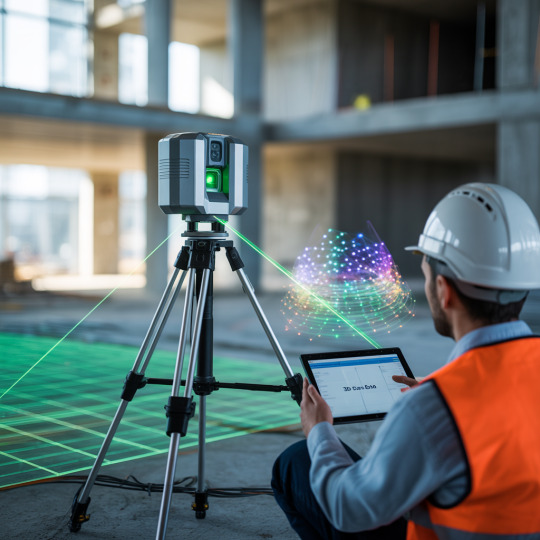

Laser scanning technology operates by emitting laser beams that reflect off surfaces and return to the scanner, capturing millions of data points known as "point clouds."
These dense point clouds represent the geometry of the scanned environment in 3D with a typical accuracy range of 2-3mm.
Key capabilities include:
Capturing comprehensive spatial relationships, material conditions, and architectural features.
Recording manufacturer-specific details such as door and window dimensions, HVAC equipment, and more.
Seamless integration with BIM (Building Information Modeling) and CAD platforms, enhancing digital workflows.
Delivering rich geographic and architectural data used for precise modeling and analysis.
Key Benefits for Renovation Projects
Laser scanning offers several distinct advantages over traditional surveying methods, especially for renovation and retrofit projects:
Enhanced Safety: Reduces the need for physical access to hazardous or hard-to-reach areas.
Speed: Approximately 40% faster than traditional hand-measuring or manual survey methods.
Accuracy: Delivers near-exact documentation of existing conditions, essential for accurate design and construction.
Historical Preservation: Ideal for capturing intricate details in heritage buildings, ensuring their preservation during renovations.
Reduced Errors: Minimizes on-site measurement mistakes, reducing costly rework.
Enhanced Project Planning
High-resolution point cloud data enables architects and engineers to begin the renovation process with a complete understanding of the existing structure. Benefits include:
Detailed site analysis with reliable structural data.
Insight into existing limitations, constraints, and irregularities.
Early detection of structural issues, such as sagging beams or misaligned foundations.
Creation of accurate as-built documentation for use across design disciplines.
Helps reduce rework and avoid costly surprises during construction.
Streamlining Design & Construction
One of the major strengths of architectural laser scanning is its ability to streamline design and construction coordination:
Seamless integration with BIM and CAD software platforms like Revit, AutoCAD, and Navisworks.
Provides a shared, accurate data environment for all stakeholders to collaborate.
Reduces change orders by up to 35% by ensuring that the design is aligned with real-world site conditions.
Facilitates complex structural modifications with confidence and precision.
Speeds up decision-making by providing detailed visual references and data-backed models.
Quality Assurance & Compliance
Laser scanning plays a pivotal role in quality control and ensuring compliance during renovation:
Verifies that construction aligns with architectural and structural specifications.
Helps teams ensure compliance with building codes and regulations.
Accurately documents as-built conditions for comparison against original designs.
Detects deviations or discrepancies between planned and actual structures.
Supports structural analysis and validation, ensuring safety and long-term performance.
Case Study: Historical Building Preservation
A notable application of laser scanning is in the renovation of historical buildings:
Enables precise documentation of delicate or intricate architectural features like moldings, columns, and cornices.
Supports accurate alignment of new structural elements with the original architecture.
Offers digital preservation of heritage details, ensuring they are retained for future generations.
Allows for virtual design testing using 3D models before making any physical changes.
Minimizes on-site disruption, making the scanning process less invasive than traditional surveys.
Implementation Process
The implementation of a laser scanning workflow typically includes the following steps:
Initial Site Assessment: Determines scanning scope and project requirements.
Scanner Placement Strategy: Ensures full coverage of the building, interior and exterior.
Data Collection & Point Cloud Generation: Field scanning produces millions of precise data points.
Data Processing & Integration: Point clouds are cleaned, registered, and integrated into BIM or CAD systems.
Ongoing Reference: The scan data remains available throughout the renovation to resolve design or construction queries.
ROI & Cost Benefits
Architectural laser scanning offers an impressive return on investment for renovation projects:
Reduces overall project timelines by up to 30%, allowing quicker project delivery.
Helps avoid expensive design changes mid-project by catching issues early.
Cuts labor costs for initial surveying by approximately 50%.
Prevents costly rework by providing exact existing conditions before construction starts.
Creates lasting digital documentation, useful for ongoing maintenance and facility management.
Conclusion: Transforming Renovation Projects
Architectural laser scanning is transforming the renovation landscape by introducing a new level of accuracy, efficiency, and insight. By providing:
Unprecedented documentation precision
Improved decision-making based on real-world data
Clear, consistent information for all stakeholders
Significant reductions in time and cost
Preservation of both structural integrity and aesthetic value
…it is rapidly becoming an essential tool in modern building renovation. Whether working on a historical structure or a commercial upgrade, 3D laser scanning ensures the highest level of planning, execution, and project success.
#building design#architecture#architectural laser scanning#historical structure#3d laser scanning#as built documentation#bim#building information modeling
0 notes
Text
Vertical Garden Building: Growing a Greener Future One Wall at a Time

The Vertical Garden Building is best suited to this rising urban density. It is also known as the green walls or living walls. It is a perfect blend of innovation, sustainability, and aesthetics. It converts building facades and walls into a healthy ecosystem.
What Is a Vertical Garden?
A Vertical Garden, or green wall, is a method of growing plants around or within a building wall with the use of suspended frames and panels. These panels and frames can be made from plastic, synthetic fabric, metal grids, and polystyrene. These panels are slightly detached from the building walls so that proper ventilation can be done, and they do not affect the waterproofing system of the building.
This idea was first coined by a French botanist, Patric Blanc, in 1990, and the concept was first used in the Quai Branly Museum. Today, vertical gardens are very popular worldwide, they are used in schools, residential apartments, commercial buildings, hotels, airports, etc.
What are the Benefits of a Vertical Garden
Vertical gardens not only offer a great aesthetic look, but they also help to control the inner and outer climate of the buildings. It helps to improve the air quality and offer high sound insulation.
1. Environmental Benefits
Vertical gardens act as natural air purifiers. They remove the dust particles and other polluted substances from the air and provide fresh air to residents. Plants reduce the CO2, increase oxygen, and thus improve the air quality.
2. Thermal and Acoustic Insulation
In summer, green walls absorb the heat coming into the building and maintain the building’s inner environment cool. While in winter it acts as a thermal buffer, maintaining the inner environment warm.
Read more...
#3d bim modeling services#building information modeling services#bim consulting services#mep bim services#bim services#construction#bimcoordination#bim service providers#bim consulting firm#building information modeling
0 notes
Text
BIM Modeling & BIM Coordination in Chicago
We provide top BIM modeling services with expert BIM coordination in Chicago. Transform your projects with our innovative solutions.
#BIM Services#BIM Service in Chicago#Architectural BIM Service in Chicago#3D BIM Modeling#Scan to BIM#Clash Detection#MEPF BIM services
2 notes
·
View notes
Text
BIM Software Solutions for Modern HVAC Applications
As the HVAC industry continues to evolve in 2025, Building Information Modeling (BIM) has become an indispensable tool for professionals seeking to optimize design, installation, and maintenance processes. For HVAC engineers, contractors, and technicians, selecting the right BIM software can significantly impact project efficiency and outcomes. Let’s explore the most effective BIM solutions for…
#3D modeling#augmented reality#Autodesk Revit#automation#Bentley AECOsim#BIM#BIM workflows#building information modeling#Building performance#building systems#clash detection#cloud collaboration#cooling loads#decision matrix#digital twin#duct design#energy analysis#Energy efficiency#fabrication documentation#Graphisoft ArchiCAD#heating loads#hvac#HVAC design software#HVAC engineering#interoperability#mechanical engineering#mechanical systems#MEP#MEP coordination#mixed reality
0 notes